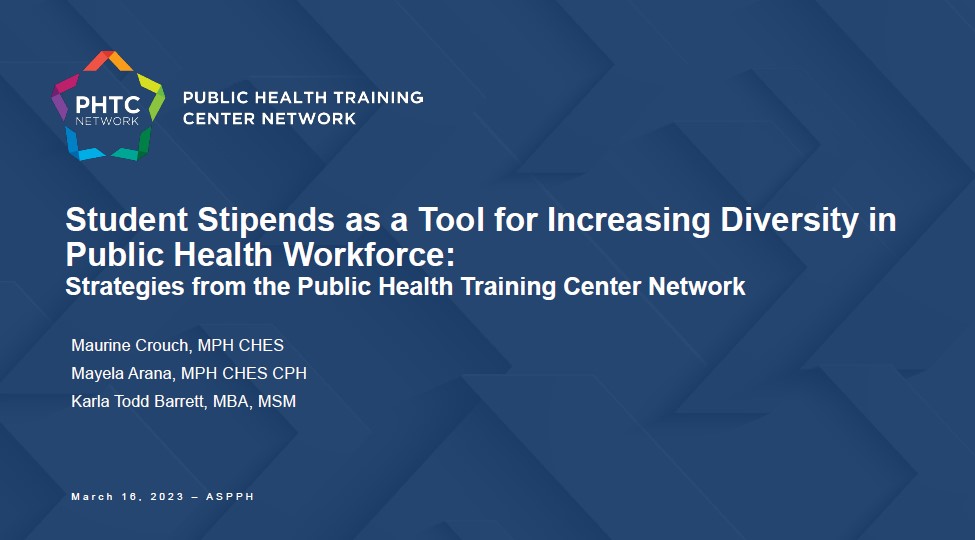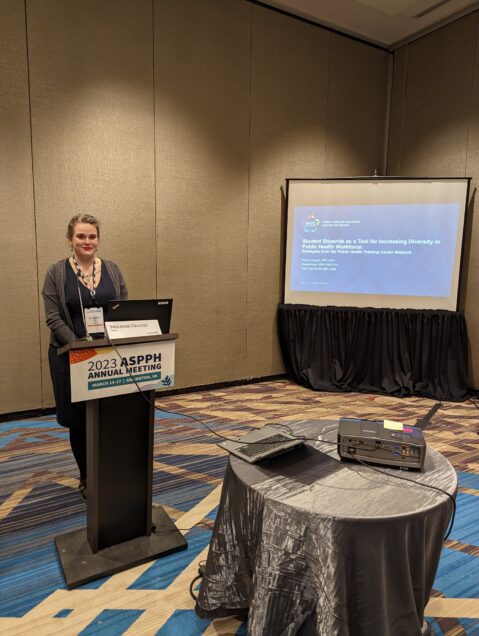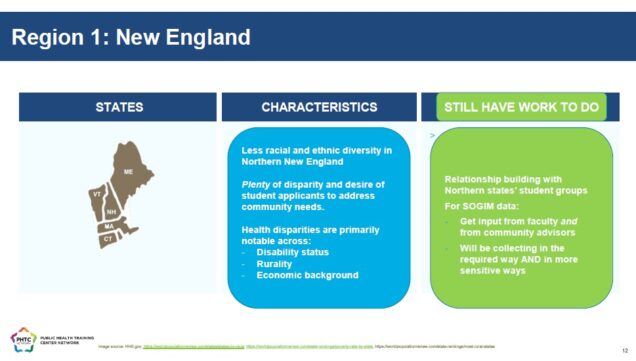ASPPH: Sharing PHTC Approaches to Increasing Diversity in the Workforce
On March 16, 2023, Maurine Crouch, NEPHTC’s Manager of Student Field Placement, shared with an engaged audience at the Association of Schools and Programs of Public Health (ASPPH) about the process strategies emerging in the HRSA-funded Public Health Training Center Network for increasing diversity in the future public health workforce, a new HRSA goal for the current grant cycle. Sharing the PHTCs approaches and initial lessons learned can help other organizations with their strategies.
The slides from the presentation “Student Stipends as a Tool for Increasing Diversity in Public Health Workforce: Strategies from the Public Health Training Center Network” can be downloaded here.
PHTCs influence the future public health workforce by providing funding for experiential learning in agencies in underserved communities, so students have a direct experience through a field placement before they graduate. The opportunity to influence the population of students we serve comes through four processes: marketing, application, selection, and support. Indeed, 9 out of the 10 PHTCs reported changing their processes in the new grant cycle, including new outreach to diverse student groups as well as relationship building with organizations and institutions serving underrepresented minorities (URM) and other underrepresented students.
PHTCs took approaches that were within the legal system and recognized underserved communities in their respective regions.
For example, in Region 1 New England, which has fewer racial and ethnic minorities in the Northern states, NEPHTC’s application gathers data on a wide range of diversity characteristics for the applicant (including race/ethnicity, SOGIM, economic/educational/environmental disadvantage, disability, rurality and others), and substantive descriptions of how the project serves an underserved population or community. The application also gathers data on the agency where the student will serve.
By contrast, Region 2 (New York, New Jersey, Puerto Rico and the USVI), has a high racial and ethnic diversity across the region. Because of this, they are interested in focusing on the project and agency that will most serve students’ learning experience and impact community needs.
In summary, PHTCs changed their programs to increase diversity in ways that worked for their regions – reflecting each regions needs and populations.



